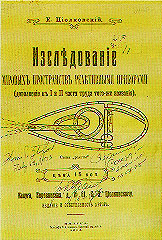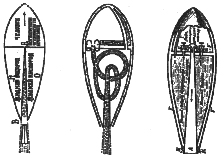|
...........The first scientific consideration of rocket propulsion as a means to achieve earth orbit was conceived in the journals of one exceptional Russian schoolteacher. Amidst an age of innovation that saw the first electric light, movie projector and phonograph, as well as the first automobiles and airplanes, a solitary man, largely isolated from the technologically advancing outside world, was drafting out the first solid ideas for what would a few scores later become the first human spacecraft. In the small Russian town of Kaluga just two years before the arrival of the twentieth century, a deaf and reclusive man named Konstantin Tsiolkovsky was calculating formulae for the practical use of liquid fuel rockets which could overcome earth’s gravity. Inspired by the writings of Jules Verne, Tsiolkovsky imagined his "reaction machines" (as he then called his conceptual fish shaped rockets) seeding the galaxy with human life, in an age of space stations and otherworldly colonies. Tsiolkovsky had published the first study of practical astronomical rocket science by the year 1903; titled "The Investigation of World Spaces with Reaction Machines." (Walter, 5) A variation on the reaction machines he proposed would prove to be the only means of propulsion powerful enough to hurl men into space. |

